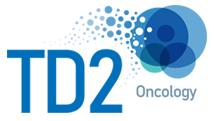Radiopharmaceuticals offer tremendous promise in oncology by providing both diagnostic and therapeutic benefits. However, the field faces several significant challenges that can hinder the development and implementation of these therapies. Below, we explore the main obstacles in radiopharmaceutical development and the efforts being made to overcome them.
1. Short Half-Lives and Supply Chain Coordination
The production and use of radiopharmaceuticals present unique challenges due to the short half-lives of key isotopes like ⁶⁸Ga, ⁶⁴Cu, and ²¹²Pb. These isotopes must be produced, quality-checked, transported, and administered to patients within hours or days, requiring precise coordination across facilities.
Supply chain disruptions are common, as radioisotopes are typically produced in a limited number of specialized nuclear reactors or cyclotrons. Any delays in production or shipment can lead to isotope decay, rendering the materials unusable. Efforts to overcome these bottlenecks include:
- Establishing production sites near clinical facilities to reduce decay risks.
- Expanding partnerships with multiple producers to diversify isotope sources.
- Investing in redundant infrastructure and integrating third-party radiopharmacies to ensure consistent availability for clinical trials.
- Working with a reputable CRO experienced in managing clinical trials with challenging isotopes.
These initiatives are critical in ensuring isotopes are delivered in optimal condition, supporting the effectiveness and timeliness of radiopharmaceutical treatments.
2. Regulatory and Dosimetry Standards
Radiopharmaceuticals operate differently from traditional external beam radiation, yet the dosimetry standards and safety regulations governing these therapies are often derived from outdated models. As new isotopes and treatment modalities are developed, regulators must create more tailored frameworks for dosimetry that reflect the specific properties of radiopharmaceuticals.
Developing appropriate safety parameters involves:
- Setting new organ dose limits specific to radiopharmaceuticals, as traditional models may not adequately account for localized radiation effects.
- Updating regulatory pathways to accommodate innovative combinations, such as theranostic agents, which combine diagnostic and therapeutic functions.
- Streamlining international regulatory compliance, given the global nature of radiopharmaceutical research and trials.
The field is moving toward more nuanced frameworks that will allow researchers to better balance efficacy and safety while navigating regulatory approvals more efficiently.
3. Recruitment and Public Perception
Recruiting participants for radiopharmaceutical trials can be challenging due to public concerns about radiation exposure. These concerns often create barriers to enrollment, particularly in trials involving experimental or high-dose treatments. Effective patient education and transparent communication about the safety protocols and potential benefits of the trial are essential to alleviate these concerns.
Efforts to improve recruitment and address public perception include:
- Providing clear, accessible information on radiation safety, trial protocols, and the therapeutic potential of radiopharmaceuticals.
- Collaborating with patient advocacy groups to build trust and encourage participation and partnering with oncology CROs that have extensive expertise in recruiting patients with specific cancer types who may benefit from radiopharmaceutical treatments.
- Developing outreach and educational materials tailored to specific demographics to improve understanding and increase enrollment.
These approaches are critical for building patient confidence and ensuring that trials can progress without recruitment delays.
4. Reimbursement and Access Issues
Despite their potential, radiopharmaceuticals face significant financial barriers. Many diagnostic radiopharmaceuticals receive temporary Medicare reimbursement codes in the U.S., which expire after a few years. This creates uncertainty for hospitals and clinics, discouraging long-term investments in these therapies.
To address these challenges, legislative initiatives like the Facilitating Innovative Nuclear Diagnostics (FIND) Act aim to create sustainable reimbursement models that encourage adoption in clinical settings. The following strategies are also being explored:
- Demonstrating cost-effectiveness with real-world data to justify the long-term value of radiopharmaceuticals.
- Collaborating with insurers to secure permanent reimbursement frameworks.
- Ensuring equitable access to radiopharmaceuticals, especially in smaller clinics and underserved regions.
Overcoming reimbursement challenges is essential for integrating these therapies into routine oncology care and expanding access to patients who could benefit from them.
Conclusion
The field of radiopharmaceuticals offers immense promise, but it must address key challenges in supply chain management, regulatory frameworks, and reimbursement policies to unlock its full potential. Progress is being made through investments in infrastructure, updated regulatory guidelines, and legislative efforts to ensure sustainable reimbursement models.
To learn more about radiopharmaceutical clinical trials and solutions tailored to these challenges, explore TD2’s Clinical Trial Services for Radiolabeled Pharmaceuticals.
By staying ahead of these challenges, the industry can pave the way for broader adoption of radiopharmaceuticals, ultimately improving outcomes for oncology patients.



